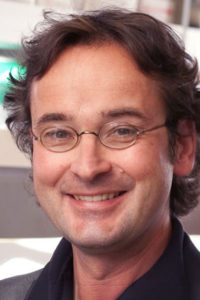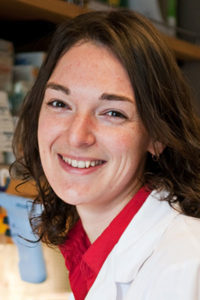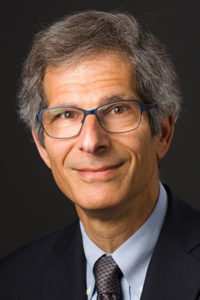
Decades of research into the autoimmune origins and pathogenesis of type 1 diabetes have long offered the potential for delay, remission, and cure. That promise is moving toward clinical reality, but multiple barriers remain.
“The holy grail of inducing tolerance remains elusive,” said Matthias von Herrath, MD, Professor of Medicine, La Jolla Institute Center for Autoimmunity and Inflammation, and Vice President and Global Chief Medical Officer, Novo Nordisk. “We are not very well able at this point to individually measure disease and tolerance. That makes it very difficult to prioritize different approaches in antigenic tolerance.”
Dr. von Herrath opened the session, Emerging Data on Therapies to Treat the Underlying Autoimmunity in Type 1 Diabetes, on Monday, June 6, with a look at the difficulties in understanding and modifying autoimmunity in type 1 diabetes. The session was livestreamed and can be viewed on-demand by registered meeting participants at ADA2022.org. If you haven’t registered for the 82nd Scientific Sessions, register today to access the valuable meeting content.
Loss of beta cell function happens abruptly around the time of type 1 diabetes onset, Dr. von Herrath noted, though many individuals with long-standing type 1 diabetes retain beta cell mass and some degree of beta cell function. Hallmarks of progression include upregulation of major histocompatibility complexes and the appearance of CD8-positive T-cells in islets.

The presence of multiple autoantibodies indicates a higher risk of type 1 diabetes onset, but variability between individuals is high. And the presence of a specific T-cell type does not always indicate the development of disease.
Studies focused on extremes in individual response have confirmed the presence of CD8-positive T-cells in type 1 diabetes and that not all CD8-positive T-cells are equal. Small trials with multiple T-cell antibody agents have found that individuals who respond to treatment have elevated levels of exhausted T-cells. Individuals who progress rapidly have few exhausted T-cells.
“T-cell exhaustion is a growing field,” said S. Alice Long, PhD, Associate Member, Benaroya Research Institute at Virginia Mason. “In cancer, you want to get rid of exhausted T-cells because exhausted T-cells are less effective. In type 1 diabetes, having more exhausted T-cells is a plus.”
Small studies have shown that individuals with the highest counts of exhausted T-cells did not progress from positive autoantibodies to overt type 1 diabetes or progressed more slowly. The 24-month TrialNet 10 trial of teplizumab used flow cytometry and single-cell RNA sequencing to identify specific subsets of CD8-positive T-cells associated with non- or slow progression.
The Inducing Remission in Type 1 Diabetes with Alefacept trial identified two subsets of CD8-positive T-cells, PD-1 and CD57, that were expanded in responders compared to non-responders.

“Treatment that augments proliferation and differentiation of CD8 exhaustion may be beneficial,” said Audrey V. Parent, PhD, Assistant Professor, University of California, San Francisco Diabetes Center. “Likewise, treatment that blocks deviation from CD8 exhaustion may also be beneficial.”
Islet transplantation can be a highly effective strategy for type 1 diabetes but is not widely used, in part due to a lack of islets to transplant. Clinical trials using islets derived from human pluripotent stem cells are under way, but immune rejection of stem cell grafts is a major concern.
“What is currently being done is immunosuppression, and there is a lot of effort being put into encapsulation strategies,” Dr. Parent said. “More recently, CRISPR means we can genetically engineer stem cells to be less immunogenic.”
Alloimmune responses fall into two categories, Dr. Parent explained. Up to 10% of T-cells are alloreactive due to mismatches of major histocompatibility antigens (HLAs) between graft and host. And the lack of self-recognition of the graft triggers natural killer (NK) cell mediated rejection.
It is possible to ablate all HLA Class I and Class II alleles, but that still leaves the problem of missing self-recognition and NK-mediated rejection.
Preserving HLA-A2 and deleting all other HLA alleles generates hypoimmune stem cells that can be differentiated into islets for transplantation. Early human studies of hypoimmune islet grafts show minimal NK cell activation and a very stable beta cell mass after at least 20 weeks. Dr. Parent said additional human testing is underway.

Type 1 diabetes screening and prediction is also improving, noted Kevan Herold, MD, the CNH Long Professor of Immunobiology and Internal Medicine, Yale School of Medicine, and Chair of Type 1 Diabetes TrialNet. Screening trials for type 1 diabetes have historically been restricted to individuals who have a family member already diagnosed with the disease.
Current screening approaches using multiple autoantibodies has shown that most type 1 diabetes begins before age 10 and progresses reliably and predictably over time, even in the 90% of individuals diagnosed with type 1 diabetes who have no known relatives with the disease. It is now possible to screen the general population for type 1 diabetes risk.
There has been similar progress in treating new onset type 1 diabetes. Abatacept, rituximab, alefacept, antithymocyte globulin, etanercept, golimumab, and other agents have slowed or reversed progression on new onset disease in clinical trials. Teplizumab could be approved by the U.S. Food and Drug Administration to slow the progression of new type 1 diabetes as early as this summer.
“We can predict future diabetes and we have a number of agents that can change the course of type 1 diabetes,” Dr. Herold said. “We are at the beginning of the end of this disease.”
[sub-post-content]